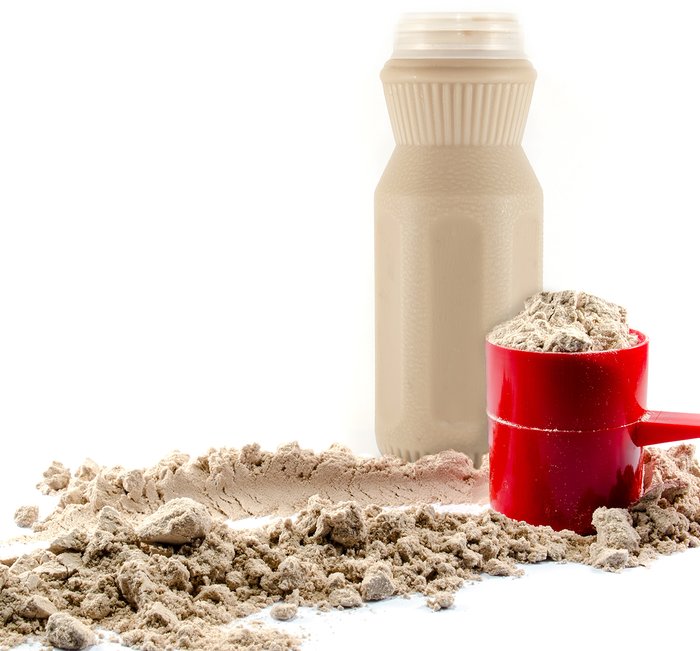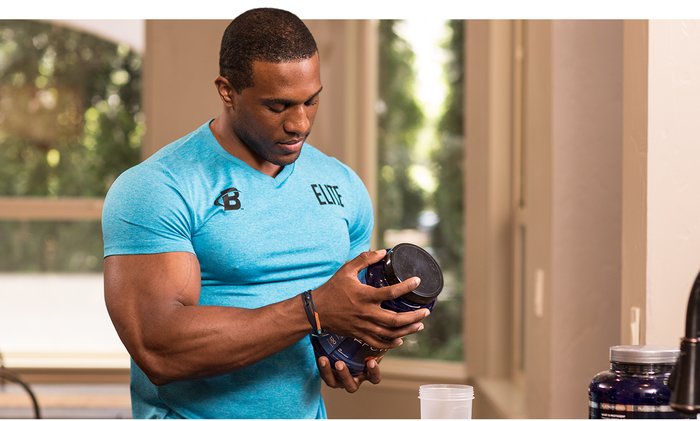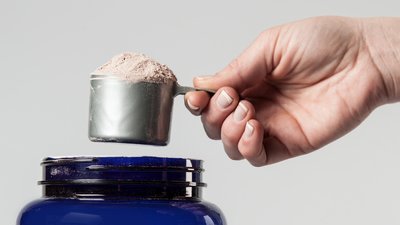Eating to gain can be a relentless task. After a while, it just gets hard to consume all those damn calories. There are a few ways to get some extra calories, and I'll talk about three in particular.
Protein shakes, meal replacements (MRP), and weight gainers provide relatively fast and convenient ways to get those extra calories, but they're not all the same. Which one is right for you? It depends.
Protein Shakes
As the most versatile and least expensive of these three options, protein shakes are probably the most useful supplement. Compared to meal replacements and weight gainers, protein shakes are lower in calories, carbohydrates, fats, and sugars, and usually contain fewer than 150 calories per serving.
Protein shakes come in two forms. Standard protein powder comes in a tub and must be mixed with a liquid such as water, milk, or almond milk. Ready-to-drink (RTD) protein comes in a can or bottle. The RTD version is by far the most convenient. All you need to do is grab the premade mixture, shake it, open it up, and drink it down. The powdered version takes a little more effort, plus you must clean up the container you mixed and drank it in. The trade-off is that you can save some money mixing it yourself.

If you're looking for a powder with the lowest amounts of carbohydrates, fats, and sugars, your best bet is to search for a brand that contains whey isolate. If you're looking for the least expensive option, choose a straight whey concentrate. A blended protein powder, with whey concentrate, whey isolate, and casein protein, lands right about in the middle. This blend provides fast-, moderate-, and slow-digesting protein sources all in one product.
If you want a nighttime protein that will support overnight hypertrophy, look for a casein powder. This is the slowest-digesting form of protein available, releasing a steady stream of nutrients for about seven hours.
The nice thing about protein powder is that you can turn it into a meal replacement or a weight gainer simply by adding other ingredients to your shake. To make it more like a meal replacement, increase the carbohydrates and fats by adding oats and natural peanut butter. To make it a weight gainer, add still more ingredients such as fruits, ice cream, ground or slivered nuts, yogurt, and flax oil.

Meal Replacements
Most of the MRPs on the market come in a pre-mixed bottle or in packets of powder. The main difference between them and protein powders is that MRPs typically contain 200-500 calories, along with micronutrients, additional carbs, and fats in the form of medium-chain triglycerides (MCTs). They can also contain 6 grams or more of fiber, which most protein powders lack.
The consistency of MRPs will almost always be much thicker than standard protein powders, which can be both good and bad. On the plus side, thicker liquids fill you up and help keep you satiated throughout the day. This benefit is helped along by the fact that most MRPs contain slow-digesting casein protein.
On the other hand, because they're thicker, they can be hard to mix. Try to use your shaker bottle, and you may end up with a lumpy mass that isn't completely mixed. The best way to make up a batch of MRPs is using a blender.

Weight Gainers
Weight gainers take things up a notch from where meal replacements left off. Most weight gainers will provide anywhere from 500-1,000 calories or more per serving. Protein content will generally be around the 50-gram mark, while carbohydrates range from 100-250 grams.
Weight gainers are really designed for you hardgainers out there—people who have a hard time putting on weight or whose metabolism cranks so fast it burns up all the fuel in sight. But no matter how hard or easy it is for you to gain weight, if your goal is to put on muscle mass and gain overall size, weight gainers just might be your best buddy.
Use weight gainers right and you add muscle mass, use them wrong and you get body fat. The key to using them the right way is knowing your numbers. First, make sure you know your basal metabolic rate, or BMR. Add 500 calories to your BMR every day and monitor your progress. The additional 500 calories can come from extra food, but if you're already consuming a lot of food and can't stomach the thought of consuming another meal, a weight gainer shake might be the best option. If you try this and see gains in lean mass, stick with it.
If, on the other hand, you're gaining body fat, adjust your numbers by reducing your caloric intake by 250 calories, and monitor your progress from there. Even with 250 fewer calories, you'll still be in a caloric surplus, so you should continue to gain size. If you started with an additional 500 calories and see no changes at all, add an additional 250 calories to your plan and keep close track of your weekly progress.

